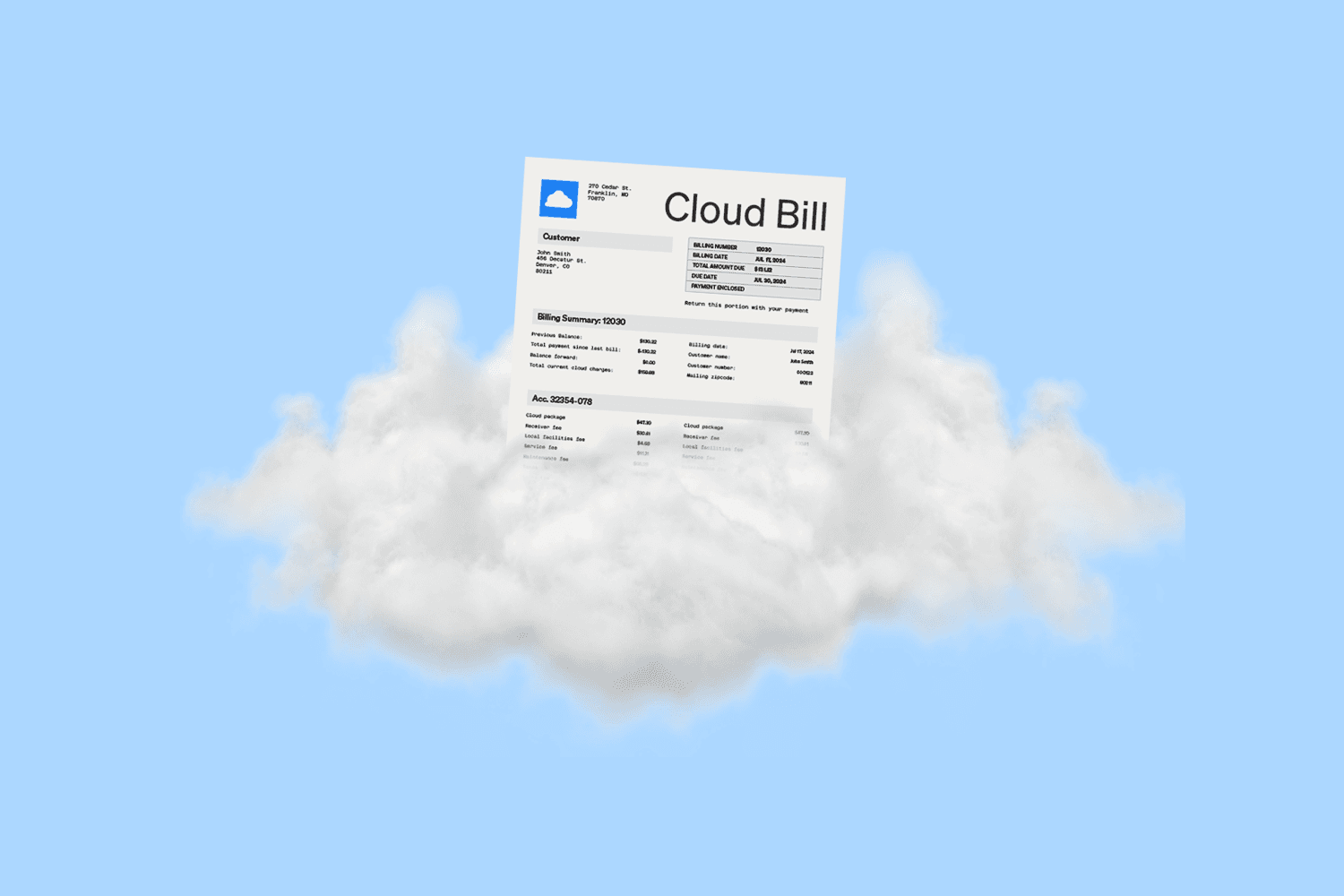An essential part of cloudops strategy: Monitoring the bill
Part of the “ops” strategy is making sure you’re using all the cloud you bought.

Amelia Kinsinger
• 4 min read
Billy Hurley has been a reporter with IT Brew since 2022. He writes stories about cybersecurity threats, AI developments, and IT strategies.
Meghna Shah often compares cloud operations, or “cloudops,” to an electricity bill. Cloud usage is a utility like anything else, and its operations must be monitored closely.
“Where did you spend your money? Why is it costing you this much? What are all the rooms that are being lit up?” Shah, a partner at auditing and accounting firm PwC, told IT Brew. Maybe a company has redundant videoconference services turned on. Maybe the org is buying off-prem storage and not using it.
As companies move to the cloud, cloudops teams are tasked with not just making sure everything’s up and running; they must also find inefficiencies. And, of course, not break the bank. A good cloudops strategy, according to pros who spoke with IT Brew, involves workload consideration, some standardization, and watching the lights.
Spending, pending
Products like cloud access security brokers can provide access logs and show how cloud services are being used, but even old-fashioned spreadsheets can help IT pros figure out costs.
Chief Technology Officer David Heinemeier Hansson and his team at the software company 37signals spent weeks using Excel to track the complex, “completely indecipherable” costs of cloud spend. According to numbers posted on his blog, Heinemeier Hansson—who spoke with IT Brew last November about his company’s move to on-prem servers—put cloud spend for March 2023 at around $180,000 and overall 2022 cloud spend at $3.2 million, or a monthly average of about $266,000. (The exec also recently spoke with IT Brew about his estimates of saving about $7 million in the next five years by exiting the cloud).
Heinemeier Hansson compared the many codes on a cloud invoice to a breakdown of individual charges on a hospital bill. A class of technologies designed to figure out expenses is a demonstration of just how cloudy cost assessment can get.
“When an entire cottage industry of finops can even exist as an entity, when you need specialized tooling to understand your bill, something has gone horribly, horribly wrong,” Heinemeier Hansson told IT Brew.
What’s ops, doc?
Cloudops pros must not only set up the infrastructure; they must also ensure resources are being used wisely.
A December 2023 survey conducted by Forrester Research (on behalf of automation company Boomi) found that 72% of its 420 global cloud or real-time-data decisionmakers reported exceeding their set cloud budgets for the year, citing excessive storage as a leading factor.
Top insights for IT pros
From cybersecurity and big data to cloud computing, IT Brew covers the latest trends shaping business tech in our 4x weekly newsletter, virtual events with industry experts, and digital guides.
The big public cloud providers have their own monitoring toolkits. Google, for example, offers information about uptime, performance, and health. Amazon Web Services (AWS) provides telemetry on cloud app behavior.
And companies searching for best-of-breed tools may want to deploy a cluster of cloud: say, Azure for IoT services, Google for AI, and AWS for databases.
According to a February 2023 study from database giant Oracle, 98% of surveyed enterprises are using or plan to use at least two cloud infrastructure providers, and 31% are employing four or more.
Setting a standard
Like Gordon Ramsey fixing a kitchen nightmare, Chad Dunn, VP of product management for Dell Apex, recommends a smaller menu, a set of standardized options put forward by the company.
“Everybody can’t get everything they want every time. So the more commonality you can drive, the more economies of scale you’re going to get, the more efficiently you’re going to use those cloud credits that you likely have,” Dunn said.
The best advice for a cloudops professional, according to Dunn, is to consider workload placement.
“Where’s the best place to run the workload? Very, very often, that’s going to be in hyperscalers. Sometimes it’s also going to be on prem. Those are hard decisions to unmake. Once you land in a cloud and become dependent on some of those services, a move is very difficult,” Dunn told IT Brew.
One company that has made the move: 37Signals. Heinemeier Hansson has been transparent about cloud costs and the costs of moving company applications back to on-premise servers.
“Our cloud spend (sans-S3) is down by 60% already. From around $180,000/month to less than $80,000,” Heinemeier Hansson wrote in September 2023, after previously announcing a departure from the cloud in June of that year.
But moving away from the cloud isn’t for everyone, and cloud or no cloud is rarely a binary choice, Shah said. In November, Heinemeier Hansson told IT Brew that the company still even uses a bit of Amazon S3 file storage.
“It’s never binary. It has to be linked to your business strategy. You have to have an understanding of what your overall transformation goals are,” Shah said.
Some companies are heading to the cloud, and it’s game on. For others, like Hansson, it’s lights out.
Top insights for IT pros
From cybersecurity and big data to cloud computing, IT Brew covers the latest trends shaping business tech in our 4x weekly newsletter, virtual events with industry experts, and digital guides.